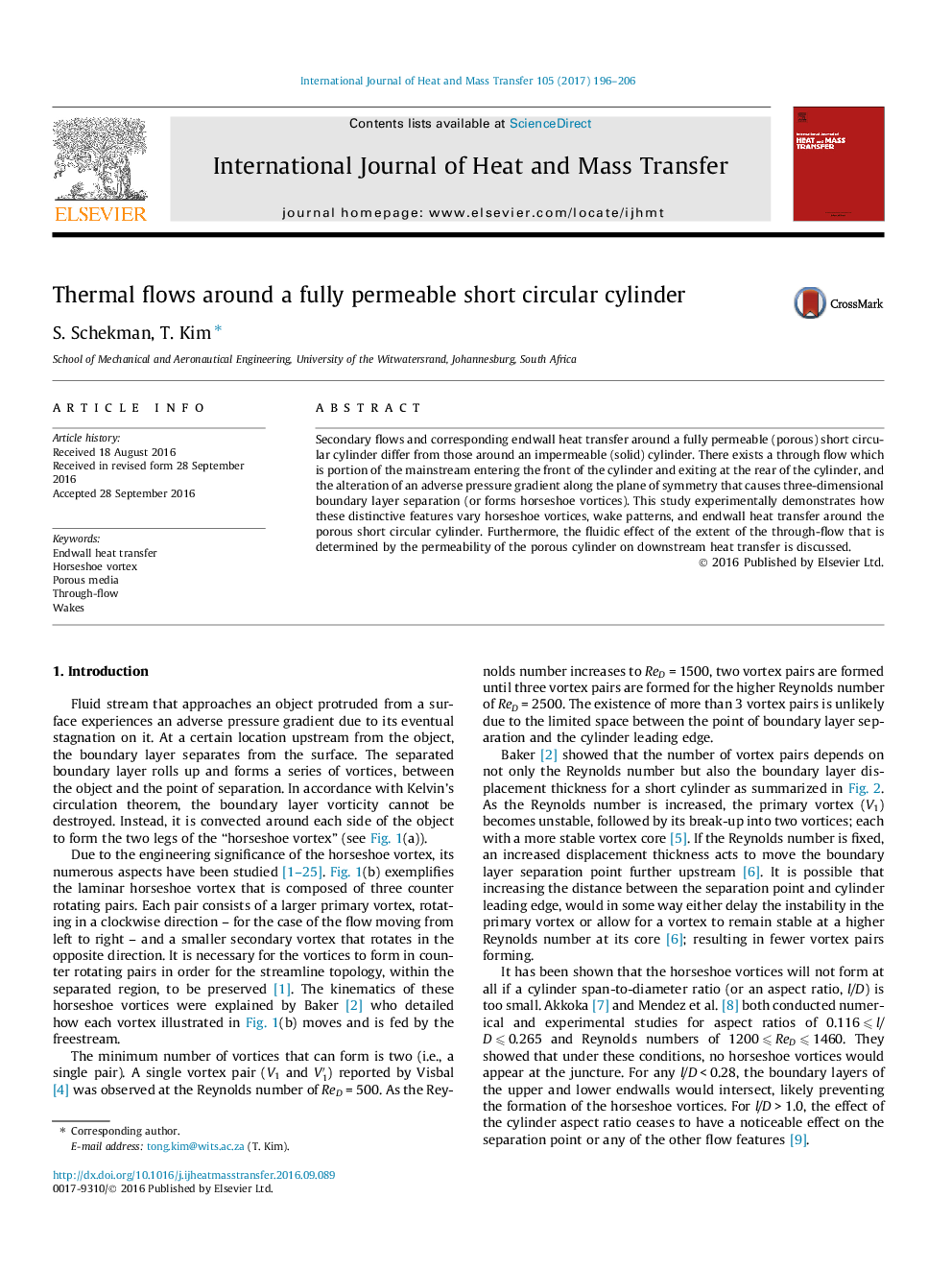| Article ID | Journal | Published Year | Pages | File Type |
|---|---|---|---|---|
| 4994683 | International Journal of Heat and Mass Transfer | 2017 | 11 Pages |
Abstract
Secondary flows and corresponding endwall heat transfer around a fully permeable (porous) short circular cylinder differ from those around an impermeable (solid) cylinder. There exists a through flow which is portion of the mainstream entering the front of the cylinder and exiting at the rear of the cylinder, and the alteration of an adverse pressure gradient along the plane of symmetry that causes three-dimensional boundary layer separation (or forms horseshoe vortices). This study experimentally demonstrates how these distinctive features vary horseshoe vortices, wake patterns, and endwall heat transfer around the porous short circular cylinder. Furthermore, the fluidic effect of the extent of the through-flow that is determined by the permeability of the porous cylinder on downstream heat transfer is discussed.
Related Topics
Physical Sciences and Engineering
Chemical Engineering
Fluid Flow and Transfer Processes
Authors
S. Schekman, T. Kim,
